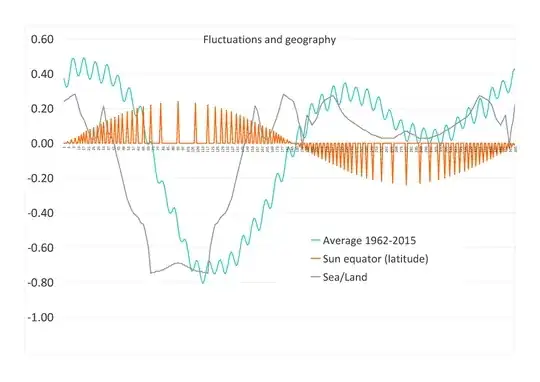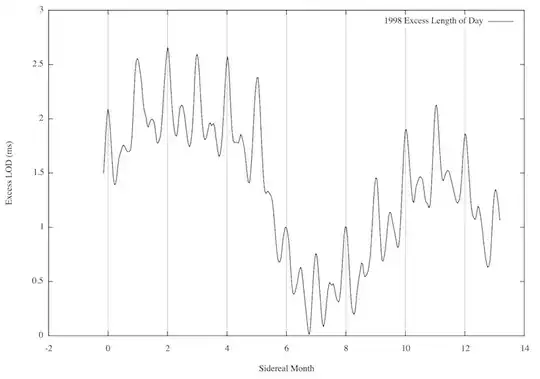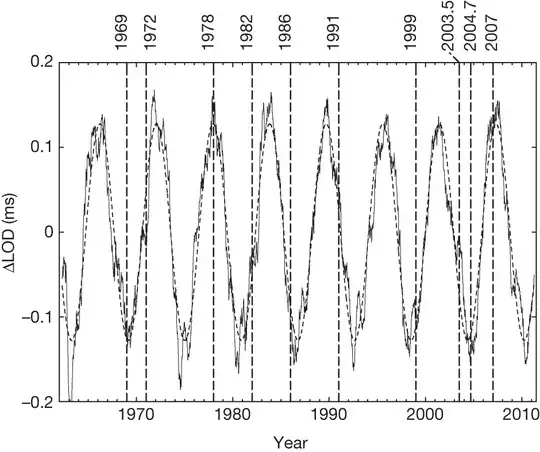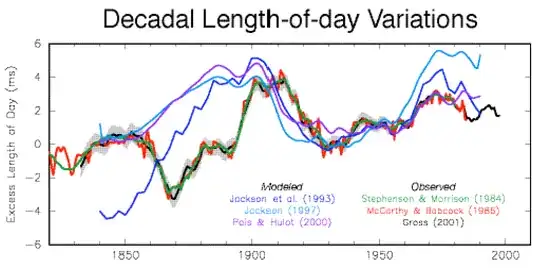Earth's rotational speed varies.
I have checked the data an found following Peaks; Year 1998, 23.May, the Earth rotated in 86400.0023738 seconds. At 9.July the rotation time of the Earth was 86400.0000159 Seconds. This acceleration happened in just 47 days.
What does this small change means in form of Rotational Kinetic Energy? E-rot = 2.138 x10^29 J I calculated it through the inertia in Excel, and I got a comparable values of Approx 2.12597562 x10^29 J and 2.12597574 x10^29 J, and though you don’t almost see any difference, it’s 11.6 x10^21 J
Is it much? Well, If you wan’t to store this energy with the mass of atmosphere; m-atm = 5.15 x 1018 kg, you need to have the whole Atmosphere to first move with a velocity of 8.2 m/s or 30 km/h and then bring it to the full stop to make this difference.
I don't find this reasonable. Also Sea current's doesn't seem to provide any reasonable explanation.
Another example can be made through long term changes. The slowest rotation speed ever was measured 18.3.1973; 86400.0041340 seconds, the fastest so far was measured at 5.7.2005; 86399.9989263 seconds. This difference means that 25.6 x10^21 J of Kinetic energy was stored for 32 years.
Question; How is physically possible that such a amount of some energy is stored in Earth for such a long time, and could still be retrieved back to a rotational Kinetic energy still having even the correct (same) direction of rotation?
To help the Search; when I put the 1962-2015 data on averages; I got the following diagram;

Which proves that the variation seem to have a certain system. Note that this is not calendar Year, it starts on Equinox; 20/21 March. The main thing to see is the +0.45...-0.75 typical annual fluctuation.
- X-axle is 365 days from equinox to equinox.
- Y-axle is milliseconds (ms); Cyan Line is average yearly fluctuations. Y zero point is 86400.0017371 Seconds
- Black lines shows the Sea-Land ratio; Change in Albedo / evaporation under sun Equator, scaled mathematically to diagramm. =(7-(Land/Latitude lenght*10)^2)/10
- Orange peaks shows she Sun Equator position in Different days; the Highest peak is sommer Solstice, and the lowest winter solstice. 0.1 = 10 Latitudes.
My Answer is; "No Way", And that Earth rotates because of sun.
- I have calculated the functionality, and I have even found a reasonable Thermodynamical explanation for this, but it's out of the scope of this question.
- This explanation would also bring this QED theory of Gravity from Feynman back to desk, which means that only Radioactivity remains outside of QED, and thus the probability that also it's explainable with QED is bigger than that it isn't. Which means that QED is probably ToE.


